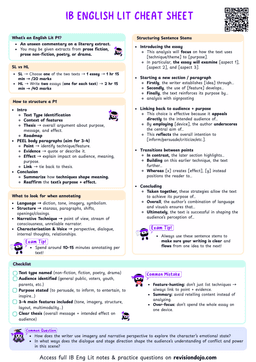Structuring Your Points
- Once you’ve written a strong thesis (subject statement): a clear sentence that explains how the writer achieves their purpose, you must decide how to structure your essay to support that argument effectively.
- Your goal is to prove your thesis using clear, well-organised body paragraphs. Each paragraph should support one smaller component of your argument.
- Usually, this means writing three main points, though two or four can also work.
How Do You Choose the Right Points?
- Here’s the mindset shift: There is no single “correct” way to structure your essay. Instead, there are many effective combinations of points you could choose. Your job is to pick one that:
- Supports your thesis
- Flows logically
- Matches the nature of the text
- Once you’ve deconstructed the text and identified the key techniques, ideas, and sections, you’re ready to choose a structure.
The Three Main Essay Structures
1. Organizing by Ideas or Themes
- This structure works when the text explores multiple central ideas or emotional perspectives.
- Each body paragraph focuses on one of those ideas or themes.
- Say you’re analysing a short story about a woman revisiting her childhood home after her mother’s passing. Your points might be:
- Her sense of nostalgia and loss
- Her conflicted relationship with her mother
- Her eventual acceptance and healing
- A suitable thesis could be:
- "The writer explores the emotional journey of the narrator’s return to her childhood home through themes of nostalgia, unresolved tension, and eventual reconciliation, in order to illustrate the enduring complexity of familial bonds."
Why this works:
- Focuses on writer's purpose: "to illustrate the enduring complexity of familial bonds"
- Uses thematic language: nostalgia, tension, reconciliation
- Links to the three paragraph points clearly:
- Point 1: Nostalgia and loss → "emotional journey" + "nostalgia"
- Point 2: Conflict with mother → "unresolved tension"
- Point 3: Acceptance and healing → "eventual reconciliation"
2. Organising by Sections of the Text
- This structure follows the chronological development of the text.
- Each paragraph focuses on a different section, usually marked by a shift in tone, perspective, or narrative focus.


